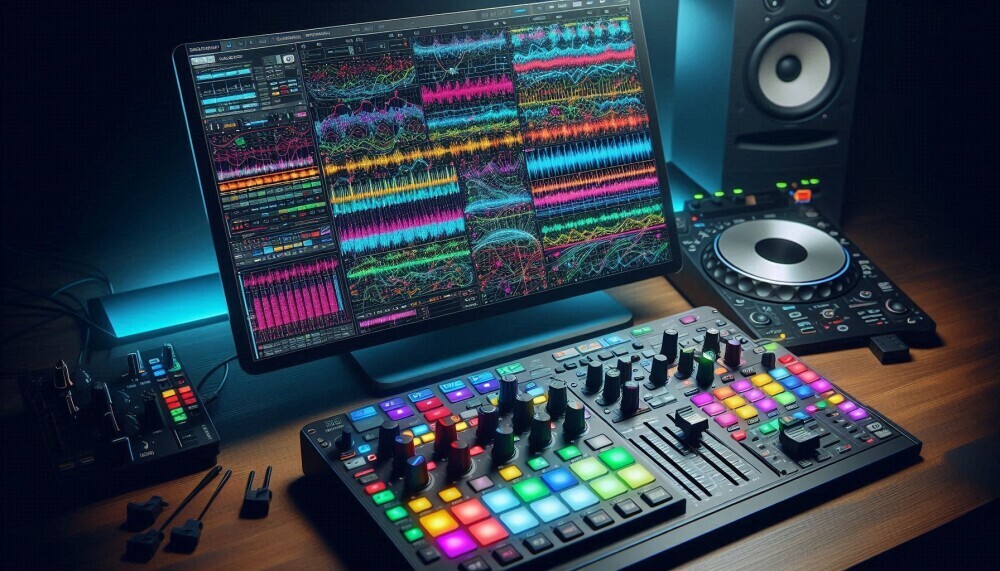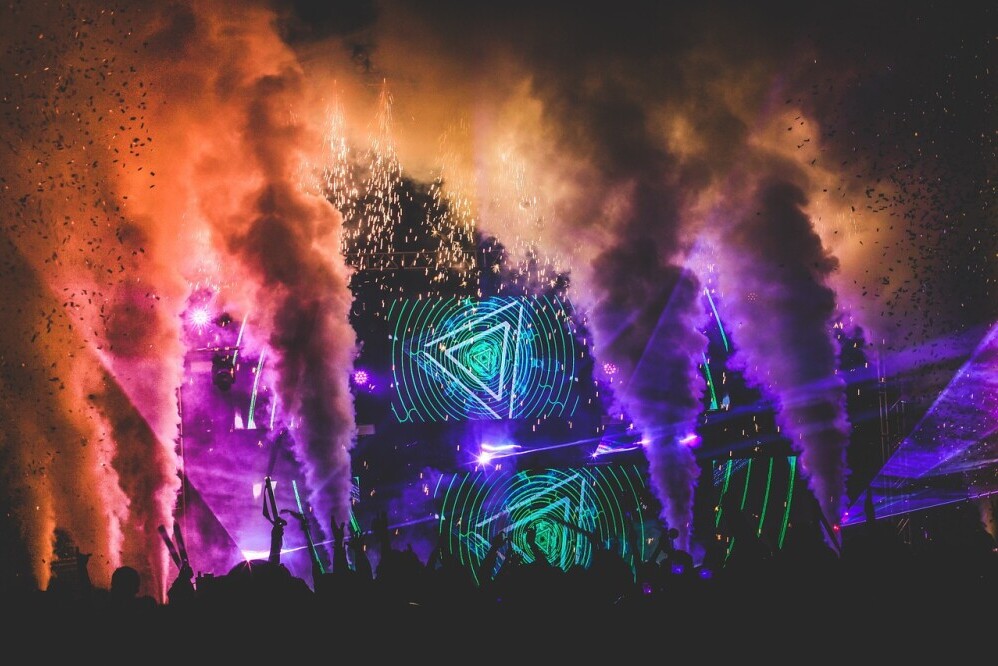
Not all music makes you feel that fist-pumping energy and euphoria quite like EDM. Standing for Electronic Dance Music, EDM isn’t just a genre; it’s a celebration of sound, rhythm, and emotion itself. Born in the underground clubs of the 1980s, EDM exploded onto the global music scene, fueled by advances in music technology and a growing festival culture.
At its core, EDM is all about electronic instruments and digital production. Think synth-heavy melodies, pulsating beats, and swirling effects. From house and techno to dubstep and trance, each sub-genre brings something unique to the floor, whether it’s a smooth, flowing groove or a bass that hits you right in the chest. The diversity in EDM accommodates a wide array of tastes and moods, making it a favorite among many.
One of the key features that sets EDM apart is its ability to change and evolve with time. Thanks to artists who constantly push the boundaries, EDM is always experimenting. This genre thrives on innovation, with producers remixing tracks, developing new sounds, and blending styles to keep things fresh. Once a fringe genre, EDM has made its way to the forefront of pop culture, with festivals and streaming platforms bringing its infectious beats to millions worldwide.
In understanding EDM, it’s important to acknowledge how it integrates technology and creativity. The producers behind these tracks are sound scientists, engineers of atmosphere. It’s this fusion of art and tech that continues to draw crowds, turning songs into anthems and concerts into life-changing experiences. EDM’s story is one of transformation—from beat to bass drop, from underground scenes to sold-out stadiums.
Key Elements of an EDM Track: Building Blocks of Every Hit
Crafting a banging EDM track involves more than just pushing buttons on a computer. There’s a rhythm to it—a method to the madness—that every producer aims to master. From the very first note in the intro all the way to that epic outro, each part serves its purpose in taking listeners on a sonic journey.
- Intro
The intro and verse set the scene. Picture opening credits to a movie—things start simple, intriguing, pulling you in. In EDM, these sections lay down the groundwork. This is where the main melody or mood grabs attention, often with a catchy riff or hook that hints at what’s to come.
Think uplifting synths or a mesmerizing bassline canceling out the surrounding noise, capturing focus. Often includes simple beats, a repetitive melody, or atmospheric elements. The intro typically avoids heavy elements like bass drops to allow room for a gradual build-up of energy.
- Breakdown
The breakdown slows the momentum, creating anticipation for the energy to build back up. It gives the track emotional depth and provides a moment of contrast.
This section often features stripped-back instrumentation, focusing on melodic or atmospheric elements like pads, vocals, or synths. The bassline and percussion are often removed or minimized.
- Build-Up
Then comes the build-up, often considered the heart-pounding part of any track. Producers might layer sounds, ramp up the tempo, and heighten the tension, creating a sense of enthusiasm and anticipation.
Includes rising elements like snare rolls, pitch rises, and effects such as white noise sweeps. The energy intensifies, creating a feeling of anticipation.a combination of powerful synths and drums.
- The Drop
This climax leads you straight into the drop, which is the release. And whoa, when done right, it’s pure magic. That’s where the beat hits hardest, often marked by massive bass and an infectious rhythm that gets everyone on their feet.
Features heavy basslines, dynamic rhythms, and the “hook” of the track. This is where the song’s energy peaks, often with a combination of powerful synths and drums.
Of course, you gotta have those unique EDM musical elements. Can’t forget the beats, synths, basslines, and samples that make each track feel alive. Every sound is carefully crafted to elicit emotion and movement. A single beat can steal the show, evoking joy, excitement, or nostalgia.
What makes EDM stand out is its powerful emphasis on rhythm and tempo. Unlike tracks that offer a constant tempo, EDM often plays with speed and dynamics to keep listeners guessing. It’s these ever-changing vibes that transform three minutes of music into an unforgettable ride.
Dissecting the EDM Structure: Crafting Tracks for Maximum Impact
When you’re venturing into creating EDM tracks, understanding the structure is like having a map to sonic success. While creativity is crucial, having a framework can help navigate ideas into something that resonates on the dance floor or in a chill session.
Traditional EDM tracks follow a structure not too different from that of pop songs. However, what takes it up a notch is the build-up and the drop—moments engineered to elicit that euphoric pulse only EDM can deliver. Unlike strict verse-chorus patterns in pop, EDM thrives on repetitive hooks and catchy loops, creating a trance-like effect.
Each sub-genre of EDM might pull you in different structural directions too. In house music, you might lean towards extended loops that stretch out a groove, while dubstep might call for heavy, intricate drops following aggressive builds.
The magic often lies in the transitions, especially from build-up to drop. Creating a seamless flow demands attention to volume, tempo changes, and layering. It’s about knowing just the right moment to pull back before unleashing the energy. Transitions can make or break a track, driving it with momentum or leaving it hanging awkwardly.
Don’t shy away from playing around with formats. Some producers prefer diving straight into energy with a quick intro, others like to tease with a long build-up, creating a canvas for DJ-friendly mixes. The key is experimenting. The right structure for you might bend ‘rules,’ but if it moves people, you’re on the right track.

Creating Catchy Drops: Making Waves on the Dance Floor
The drop in an EDM track is like the jackpot moment in a slot machine—it’s where everything converges into a powerful explosion of sound. This is where producers pull out all the stops to ensure the audience is riding high on energy.
Nailing a drop starts with understanding its role. It’s the climax that people are waiting for, the moment they’re going to remember long after the track has ended. What makes it memorable is not just its intensity, but its surprise. Playing with expectations and then delivering on them in an unexpected way can turn a good drop into a killer one.
A good drop often involves a mix of silence and sound. The art of the drop is knowing when to pull back—let the tension simmer and then boom, hit them with everything. This dynamic shift is what turns heads and takes tracks from average to adrenaline-pumping.
Sound design is your best friend here. Experiment with different synths, bass patterns, and sample chopping to find a unique sound palette. Sometimes, the craziest sound, something unorthodox, can be the defining moment in your track. It’s about crafting a sonic signature that fans can instantly recognize.
For those iconic, floor-stirring drops, look at tracks from major players in the EDM scene. Analyzing what works for them can offer insight into crafting your own distinctive drops. Inspiration doesn’t mean imitation though, so keep that touch of originality. This is your soundscape; let it reflect your personal flair.
Tips and Tricks for Aspiring EDM Producers: From Idea to Masterpiece
Kicking off your journey into EDM production can feel like stepping into a labyrinth of sounds and software, but fear not—every producer starts somewhere, and the path is packed with excitement.
First off, equip yourself with the right tools. You don’t need the fanciest gear to start—just a decent laptop, a digital audio workstation like Ableton Live or FL Studio, and a good pair of headphones can set you up for success. These tools allow you to experiment and understand the mechanics behind the beats. Most producers today began in their bedrooms—you’re in good company.
Read: The Ultimate Guide To A Basic Home Recording Studio Setup For Beginners
On refining your sound and style is where your personal brand begins to form. EDM is vast; find what moves you. It could be the melodic progressions of progressive house or the raw energy of drum and bass. Listen to a ton of music, dissect it, and pick out elements that resonate with you.
Creating your unique sound might take time, but experimentation is key. Dive into tutorials, collaborate with other artists, and constantly challenge yourself to push beyond comfort zones. Feedback is gold, so share your music with communities and be open to constructive criticism—it’s the fuel that can refine your skills.
Growing your presence is about building connections. Share mixes on platforms like SoundCloud, engage with EDM forums, and attend local gigs and festivals. The EDM community thrives on collaboration and networking. Your sound will evolve, and so will your reach. Promotions are a part of the game, but authenticity continues to win overall.
Finally, remember that persistence is key. The music industry can be a rollercoaster, but each track you make adds to your story and skill set. Keep experimenting, stay passionate, and enjoy the ride. Who knows? Your next track might just be the one that makes a splash.

This is such an insightful breakdown of EDM song structure!
I love how you’ve highlighted not only the key components like intros, breakdowns, and drops but also the creative process behind crafting those euphoric moments that define the genre. It’s fascinating to see how much thought and precision goes into building that perfect drop, it truly is an art form that blends technology and emotion.
The idea of using silence and tension to enhance the impact of a drop really stood out to me. It’s such a simple yet powerful technique that can make or break a track. And the emphasis on originality and experimentation is a great reminder that the best EDM tracks are the ones that push boundaries and surprise listeners.
One question I have is:
How do you recommend balancing creativity with the “rules” of EDM structure when producing a track?
Is it better for beginners to stick to traditional frameworks or start experimenting early on to develop their unique sound?
Thanks for such an inspiring and detailed guide, it’s a great resource for aspiring producers looking to make their mark in the EDM scene!
Thank you for your comment, Benjamin
To answer your questions: Honestly, the “rules” of EDM structure are more like guidelines. Stick to the basics—like the intro, build-up, drop, and outro—but don’t be afraid to mix things up. Experiment with unique sounds, unexpected transitions, or creative build-ups while keeping the overall flow DJ- and dancefloor-friendly. Balancing creativity with structure is what makes tracks memorable, so test your ideas while staying true to the genre’s energy and vibe.
Is it better for beginners to stick to traditional frameworks or start experimenting early on to develop their unique sound?
For beginners, it’s smart to start with the traditional frameworks like the classic 8-bar phrases or the drop-heavy structure. It gives you a foundation and helps you learn what works. But don’t get stuck there—once you’re comfortable, start tweaking things! Play around with unique sound design, rhythms, or breakdowns. Developing your signature sound comes from experimenting, but knowing the basics first helps your creativity shine without losing listeners.